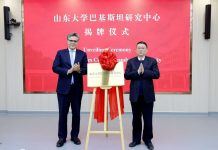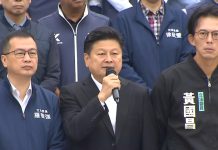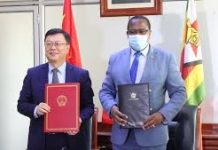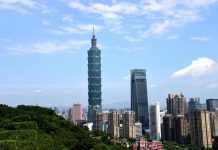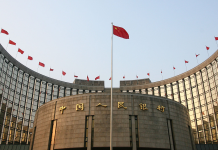BEIJING: In 1993, a young Zhou Qunfei mortgaged her life savings to rent a three-bedroom apartment in Shenzhen, transforming it into a workshop for watch glass printing. Three decades later, her journey, and that of millions like hers, epitomizes China’s industrial metamorphosis from low-cost assembly to an indispensable part of global supply chains.
Zhou’s early struggles mirrored China’s manufacturing landscape in the 1990s, when the nation relied on foreign technology and cheap labor. Born into poverty in rural Hunan, she left school at 16 and migrated to Shenzhen, working grueling factory shifts while attending night classes in accounting, computer skills, and even truck driving – a foundation for her future entrepreneurial ventures.
Little did she know at the time that she would go on to rewrite the rules of an entire industry, with her path closely aligning with that of her country – ultimately contributing to technological self-reliance in many key sectors of advanced manufacturing. While Zhou toiled in Shenzhen, another drama unfolded 800 kilometers north, in Wuhan. Zhong Sheng joined Yangtze Optical Fibre and Cable (YOFC) in 1993 as a maintenance worker, initially struggling with imported computerized systems. In 1996, he single-handedly repaired a critical Finnish coating line in 48 hours, averting costly foreign intervention. Determined to break foreign monopolies, he later spearheaded China’s first fully domestic optical cable control software. Despite technical embargoes and vision damage from overwork, his team completed the system in two years for under 50,000 yuan. When foreign suppliers refused to negotiate, Zhong’s solution succeeded in trial runs, enabling YOFC to independently upgrade aging production lines.
Zhong’s “stubborn ingenuity” became a blueprint. Over two decades, he spearheaded 231 technical innovations and eight patents, including a “root-cause repair” philosophy that transformed maintenance from reactive fixes to proactive upgrades. His work laid the groundwork for YOFC to master fiber preform manufacturing by 2016, cementing its eight-year reign as the world’s leading optical fiber producer by market share.
The humble technician’s story is emblematic of China’s journey from a peripheral player in global industry to a central hub of high-tech manufacturing. In the early 2000s, as globalization deepened and Western multinationals sought low-cost production bases, China became known as the “world’s factory.” But over the next two decades, it strategically moved up the value chain – investing in education, R&D and infrastructure while fostering homegrown champions across hardware, semiconductors and advanced materials.
In two decades following 2000, China’s share of global manufacturing value added increased fivefold – from 6 percent to over 30 percent. The tech sector, in particular, saw exponential growth, with Chinese manufacturers dominating critical components such as fiber optics, phone panels and lithium batteries.
Zhou’s trajectory paralleled this shift. Around 2001, as China’s electronics market blossomed and phones became more common, she seized an opportunity. A friend handed her a TCL phone panel processing order, prompting her to propose replacing the fragile acrylic panels with watch glass technology she knew well, and TCL agreed.
While the industry was already searching for alternatives to acrylic, Zhou, an outsider, became a pioneer by successfully adapting watch glass technology to mobile phones through many experiments with her team. That was when her humble venture began evolving into Lens Technology, now a smart manufacturing giant. In 2007, Apple’s iPhone launch catapulted her firm into the global spotlight. Zhou’s team pioneered ion-exchange techniques to produce ultra-thin, scratch-resistant glass, meeting Apple’s exacting standards and securing a dominant position in smartphone touchscreens. Today, with a market capitalization of over 100 billion yuan ($13.9 billion), the company holds more than 2,200 patents and has expanded into emerging industries such as AI glasses and smart vehicles. –The Daily Mail-CGTN news exchange item


